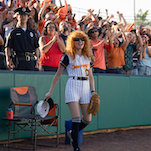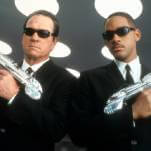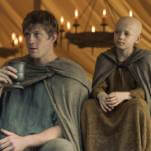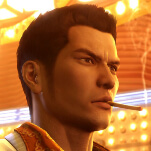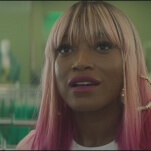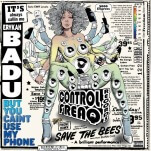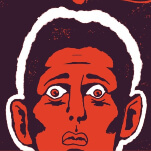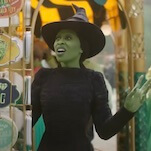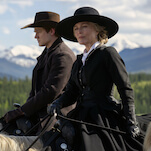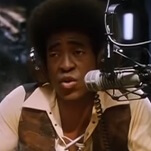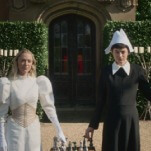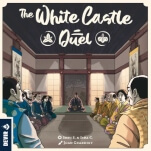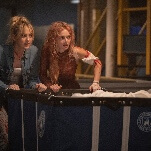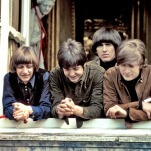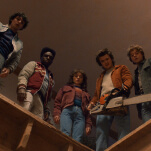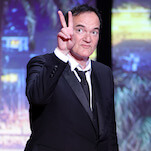Primer: Alan Moore
Moore 101
"I'd discovered American comic books
at age 7," Alan Moore told the website Comic Book Resources in a 2002
interview. "I later came to appreciate comics as an art form, and
realized that even with glorious exceptions like Will Eisner [and] Harvey
Kurtzman, this was a field that was still largely untouched. Its great work
still lay in the future at that point." Coming from anyone else, the statement
would sound immodest, but Moore's work backs it up. Since entering the comics business
in the late '70s, Moore has helped redefine the medium several times over. But
his work leans more toward the subversive than the radical. The lion's share of
Moore's writing can be classified neatly into genres—dystopian science
fiction, true crime, more than a few superhero stories—but written in a
way that takes the genre's conventions apart while still paying heed to them.
Moore is a maverick who realizes he needs a tradition to play against.
Moore's best-known, bestselling work is Watchmen, which calls upon decades
of superhero tradition, and helped kick off the trend of "grim 'n' gritty"
adventure comics by placing morally ambiguous characters in a more realistic
milieu. Released in serial form over 12 issues in 1986 and '87, Watchmen was loosely based on the
Charlton Comics' line of Golden Age superheroes (properties wholly owned by DC Comics, Watchmen's publisher), but it added
all manner of pulp archetypes and historical conundrums, from pirate tales and
murder mysteries to the Gordian Knot and the quagmire in Vietnam. Unlike the
postmodern superhero stories to
come—some by Moore himself—Watchmen doesn't take a
tongue-in-cheek approach to existing comics history. It rewrites that history
completely, imagining costumed crusaders as pathetic and pathological, less
interested in keeping the peace than in living out their self-satisfying
fantasies. But while Watchmen's characters and plot have become less radical over
time—either because they've been copied so much, or because they were
thin and derivative to begin with—the structure and sophistication of the
book's storytelling remain every bit as thrilling now as they were 20 years
ago. Dave Gibbons' insanely detailed art finds visual rhymes and thematic
connections that even Moore didn't know he'd implied, and Moore's method of
stopping the action in order to look deeper into what a character is reading,
as well as his devoting whole chapters to some heroes' convoluted backstories
(complete with frenetic time-jumps, in the case of the omni-powerful Dr.
Manhattan) has influenced a generation of geek art, right up to the current ABC
hit Lost.
The immediate impact of Watchmen was a wave of violent, ugly, and stupid superhero
comics. The long-term impact has been much more resounding.
After swearing off major comics companies over
issues of creators' rights in the late '80s, Moore spent much of the '90s doing
quirky short-term assignments and work-for-hire jobs for the many upstart
independent publishers that sprung up in the early '90s. Meanwhile, he worked
on a pair of long-term projects: Lost Girls (see below) and From
Hell,
a sprawling, copiously researched account of the Jack The Ripper slayings. As a
mystery, it's a non-starter: Moore reveals the killer early on, and his
solution is neither original nor, with its conspiratorial ties to Freemasonry
and the Royal Family, plausible. But that really isn't the point. From Hell lets Moore vivisect Late
Victorian culture, pinpointing the source of the slaying less as one man than as
the society that produced him, and tracing a pattern of cause and effect from the
architects of Atlantis up to the present day. Moore's work has always been best
served by artists ready to realize his vision down to the minutest detail, and
here, Australia-based artist Eddie Campbell uses quavery black-and-white art to
capture the church steeples, downtown billboards, and back-alley blood-spatters
with equally unsparing attention.
Moore, a lifelong resident of Northampton,
England, ended the '90s by launching the slyly named America's Best Comics, an
imprint consisting, initially at least, of comics penned entirely by Moore. All
the ABC titles have qualities to recommend them, but none has the immediate
appeal of Top 10, a police drama set in a city of superpowered beings inspired
more by Ed McBain than Justice League Of America. Loaded with references
both obvious and obscure (some buried almost subliminally in Gene Ha's penciled
art), it sends up the conventions of cop and superhero stories without letting
the humor overwhelm the emotional pull of its appealing characters. It breathed
fresh life into both genres, before ending unceremoniously after 12 issues.
Moore returned to the Top 10 world twice, with excellent results both times:
Using a pair of characters to explore the conventions of fantasy literature
with the spin-off limited series Smax, and delving into the origins of the Top 10 world with the prequel
graphic novel Top 10: The 49ers.
Intermediate Work
After a couple of years of writing short comic-book
stories for British magazines—often using pre-existing characters like
Captain Britain—Moore started developing ideas for original series. In
1982, in the cutting-edge UK anthology Warrior, Moore and artist David
Lloyd introduced V For Vendetta, a dark commentary on what they saw as the
creeping fascism of the nuclear age. Moore and Lloyd offer up two protagonists:
a philosophical terrorist wearing a mask fashioned after notorious anarchist
Guy Fawkes, and an abused young woman whom "V" takes under his wing, to teach
her (and thereby us) what needs to be done to preserve individuality and free
thought. Built around short chapters, frequent plot twists, and heavy doses of
bleak irony, V For Vendetta was a sensation in serialized form, but Moore and
Lloyd had to abandon the story when Warrior folded. They came back to
it three years later, when DC offered to let them finish the run, but the
completed book feels unbalanced. It's two-thirds a gripping yarn, followed by a
rushed, shrill third act. Still, those first two-thirds were enough to prove
that Moore had the vision to spin a complex, involving narrative over more than
eight pages.
Another densely detailed period piece, this one
illustrated by Kevin O'Neill, The League Of Extraordinary Gentlemen takes a concept straight
out of fan fiction and turns it into an exciting inquiry into how the heroes
and villains an era produces reveal its fears and desires. With explosions.
That premise: What if The Invisible Man, Captain Nemo, Mr. Hyde, Allen
Quatermain, and Mina Murray from Dracula teamed up to save the world? It works both
as high adventure and as a game of spot-the-reference sure to challenge the
most hardened devotee of Victorian and Edwardian popular fiction. But Moore's treatment
of the characters truly distinguishes the book. He doesn't so much redefine his
heroes as draw out who they already are. The Invisible Man becomes the
definition of amorality. Nemo's opposition to authority becomes a precursor for
the coming centuries' terrorist acts. After revealing that The League was one
of several Leagues that appeared over the centuries, Moore and O'Neill deepened
the mythology with a satisfying second volume and the frustrating The League
Of Extraordinary Gentlemen: The Black Dossier, the latter as much a sourcebook as a
proper story.
Watchmen overshadows most of Alan Moore's other superhero
work, but it was neither his first nor his last plunge into the world of capes
and tights. The tangled history of Miracleman—from its origins as
a British derivation of the 1940s Captain Marvel character to its current
status as the source of a seemingly bottomless legal quagmire—is a Primer
unto itself. Moore's run on the title stretched from its 1982 revival as a
feature in Warrior
through 16 issues. It begins with the middle-aged Micky Moran remembering he
has the ability to transform into a superhero with the use of a magic word, and
it ends with Moran's alter ego becoming a god on earth. In between, Moore
teases out the troubling implications always present in the genre. What do
these power fantasies mean, and, if left unchecked, where would they take us? Can the gulf
between humanity and superhumanity ever be closed? "His emotions are so pure,"
Moran tells his wife early in the run, "when he loves you it's gigantic. His
love is so strong and clean… When I love you it's all tangled up with who's not
doing their share of the washing up and twisted neurotic things like that." By
the end of Moore's story, the part of Moran that asks such questions is gone.



